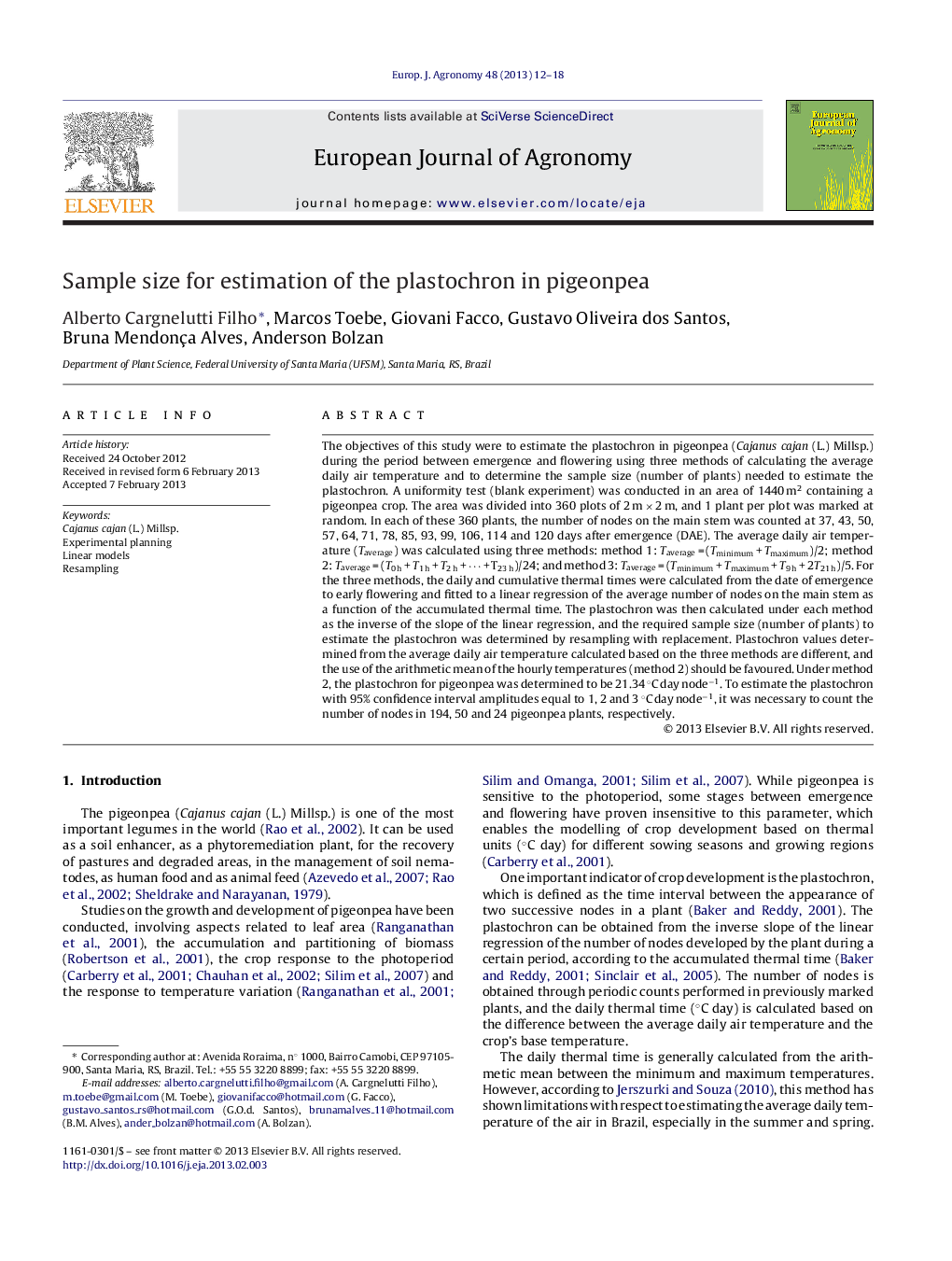| کد مقاله | کد نشریه | سال انتشار | مقاله انگلیسی | نسخه تمام متن |
|---|---|---|---|---|
| 4509072 | 1624478 | 2013 | 7 صفحه PDF | دانلود رایگان |

The objectives of this study were to estimate the plastochron in pigeonpea (Cajanus cajan (L.) Millsp.) during the period between emergence and flowering using three methods of calculating the average daily air temperature and to determine the sample size (number of plants) needed to estimate the plastochron. A uniformity test (blank experiment) was conducted in an area of 1440 m2 containing a pigeonpea crop. The area was divided into 360 plots of 2 m × 2 m, and 1 plant per plot was marked at random. In each of these 360 plants, the number of nodes on the main stem was counted at 37, 43, 50, 57, 64, 71, 78, 85, 93, 99, 106, 114 and 120 days after emergence (DAE). The average daily air temperature (Taverage) was calculated using three methods: method 1: Taverage = (Tminimum + Tmaximum)/2; method 2: Taverage = (T0 h + T1 h + T2 h + ⋯ + T23 h)/24; and method 3: Taverage = (Tminimum + Tmaximum + T9 h + 2T21 h)/5. For the three methods, the daily and cumulative thermal times were calculated from the date of emergence to early flowering and fitted to a linear regression of the average number of nodes on the main stem as a function of the accumulated thermal time. The plastochron was then calculated under each method as the inverse of the slope of the linear regression, and the required sample size (number of plants) to estimate the plastochron was determined by resampling with replacement. Plastochron values determined from the average daily air temperature calculated based on the three methods are different, and the use of the arithmetic mean of the hourly temperatures (method 2) should be favoured. Under method 2, the plastochron for pigeonpea was determined to be 21.34 °C day node−1. To estimate the plastochron with 95% confidence interval amplitudes equal to 1, 2 and 3 °C day node−1, it was necessary to count the number of nodes in 194, 50 and 24 pigeonpea plants, respectively.
► We determined the plastochron in pigeonpea.
► We used three methods for calculating the average daily air temperature.
► We used resampling to quantify the sample size.
► We determined the number of plants required to estimate the plastochron.
Journal: European Journal of Agronomy - Volume 48, July 2013, Pages 12–18